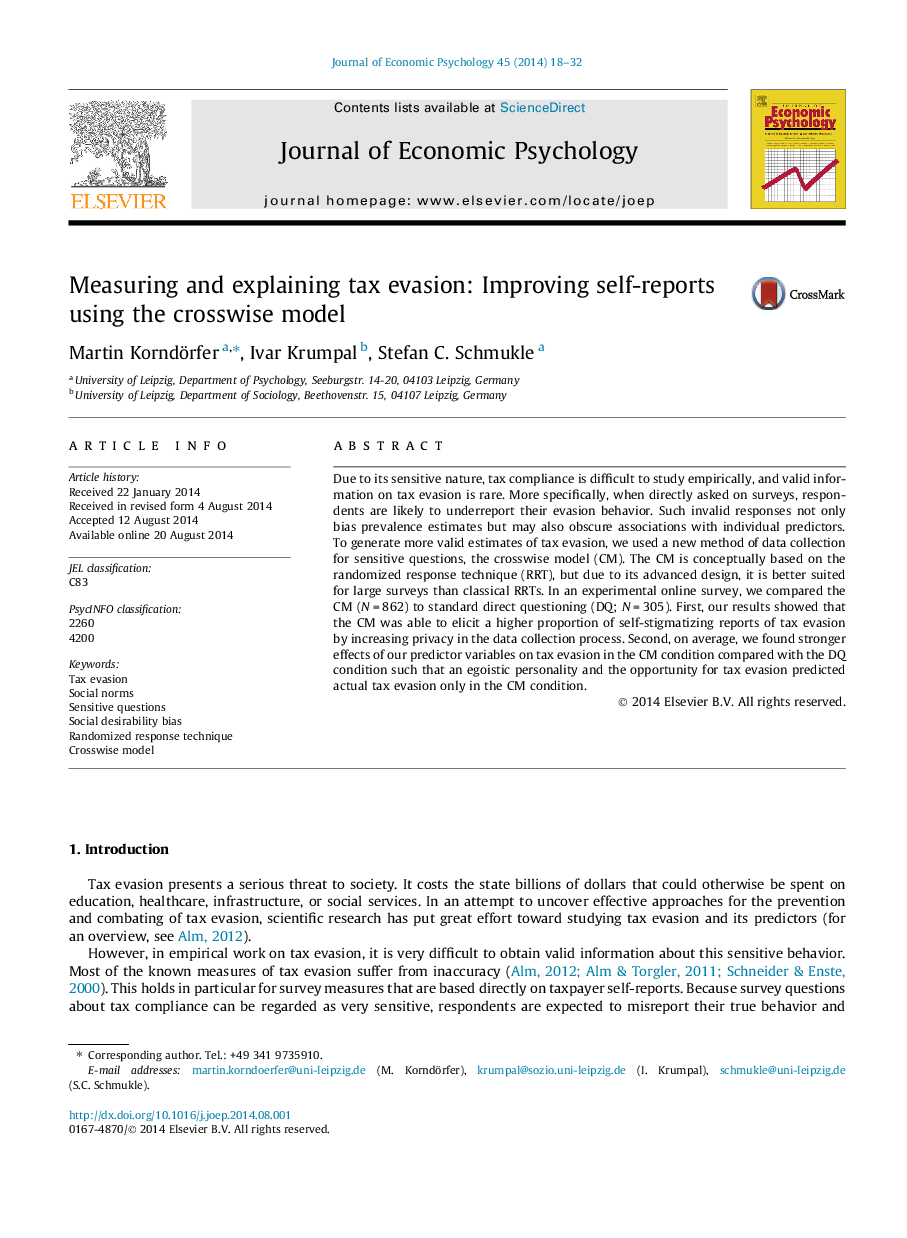| کد مقاله | کد نشریه | سال انتشار | مقاله انگلیسی | نسخه تمام متن |
|---|---|---|---|---|
| 884928 | 1471721 | 2014 | 15 صفحه PDF | دانلود رایگان |

• We present the crosswise model (CM), a de-jeopardizing questioning technique.
• We use the CM to determine prevalence estimates and predictors of tax evasion.
• We compare results for the CM with those for direct questioning (DQ).
• The CM yields higher and more valid prevalence estimates of tax evasion than DQ.
• Effect sizes of egoism and opportunity are enhanced by using the CM compared with DQ.
Due to its sensitive nature, tax compliance is difficult to study empirically, and valid information on tax evasion is rare. More specifically, when directly asked on surveys, respondents are likely to underreport their evasion behavior. Such invalid responses not only bias prevalence estimates but may also obscure associations with individual predictors. To generate more valid estimates of tax evasion, we used a new method of data collection for sensitive questions, the crosswise model (CM). The CM is conceptually based on the randomized response technique (RRT), but due to its advanced design, it is better suited for large surveys than classical RRTs. In an experimental online survey, we compared the CM (N = 862) to standard direct questioning (DQ; N = 305). First, our results showed that the CM was able to elicit a higher proportion of self-stigmatizing reports of tax evasion by increasing privacy in the data collection process. Second, on average, we found stronger effects of our predictor variables on tax evasion in the CM condition compared with the DQ condition such that an egoistic personality and the opportunity for tax evasion predicted actual tax evasion only in the CM condition.
Journal: Journal of Economic Psychology - Volume 45, December 2014, Pages 18–32